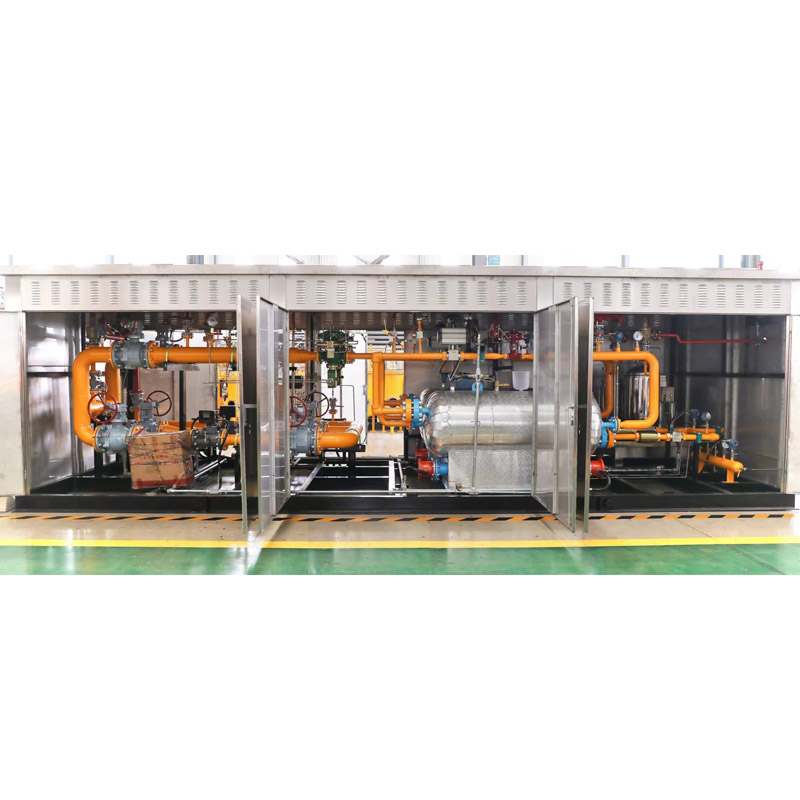
Dec . 15, 2024 04:55
Back to list
Heat Exchanger Design for Gas Applications and Performance Analysis
Understanding Gas Heat Exchangers Principles and Applications
A heat exchanger is a crucial component in various engineering systems, primarily used to transfer heat between two or more fluids without mixing them. Heat exchangers are prevalent in industries where thermal management is vital, such as power generation, chemical processing, and HVAC (Heating, Ventilation, and Air Conditioning) systems. Among the different types of heat exchangers, gas heat exchangers play a significant role in optimizing energy use and improving efficiency.
Fundamentals of Gas Heat Exchangers
Gas heat exchangers operate based on the principle of thermal conduction, where heat is transferred from a hot gas to a cooler gas or liquid through a solid wall. This process can occur in several configurations, such as counterflow, parallel flow, or crossflow designs.
1. Counterflow Heat Exchangers In this configuration, the two fluids flow in opposite directions. This design maximizes the temperature difference between the fluids throughout the heat exchange process, leading to more effective heat transfer.
2. Parallel Flow Heat Exchangers Here, both fluids move in the same direction. Although this design is simpler, it typically results in a lower overall heat transfer efficiency compared to counterflow configurations, especially when the temperature difference between the fluids decreases.
3. Crossflow Heat Exchangers In this arrangement, the two fluids intersect at right angles. This type of design is often used in applications where one of the fluids is a gas, such as in air conditioning systems.
.
Gas heat exchangers find applications across a broad spectrum of industries. In the energy sector, they are employed in power plants to recover waste heat from combustion exhaust gases, significantly improving the overall efficiency of the plant. In natural gas processing, heat exchangers are used to cool gases during various stages of compression and liquefaction processes.
مبادل حراري للغاز

In HVAC systems, gas heat exchangers contribute to energy efficiency by recovering heat from exhaust air and preheating incoming air without mixing the two streams. This process helps reduce the energy demand for heating, leading to lower operational costs and a smaller environmental footprint.
Design Considerations
When designing a gas heat exchanger, several factors must be considered. The materials used for construction must withstand the temperatures and pressures of the fluids involved, as well as potential corrosive elements. Common materials include stainless steel, aluminum, and specialized alloys.
Another critical design aspect is the surface area of the heat exchanger. A larger surface area typically enhances heat transfer efficiency, but it also impacts the size and cost of the unit. Engineers use various methods, including fins and corrugated surfaces, to increase the surface area without significantly increasing the overall size of the heat exchanger.
Efficiency and Performance Optimization
To ensure optimal performance, it's essential to regularly monitor and maintain gas heat exchangers. Fouling, or the accumulation of unwanted material on the heat transfer surfaces, can significantly reduce efficiency. Periodic cleaning and inspection help maintain effective heat transfer rates, prolonging the lifespan of the equipment.
Moreover, modern advancements in technology have led to the development of smart heat exchangers equipped with sensors and control systems. These innovations enable real-time monitoring of operating conditions, allowing for adjustments to enhance performance and efficiency.
Conclusion
Gas heat exchangers are integral components in various industries, contributing to energy efficiency and sustainable practices. By understanding their design, applications, and operational considerations, engineers and industry professionals can optimize heat exchange processes, improve thermal management, and ultimately minimize environmental impact. As technology continues to advance, the role of gas heat exchangers in energy systems will become increasingly significant, paving the way for a more sustainable and energy-efficient future.
Next:
Latest news
-
Safety Valve Spring-Loaded Design Overpressure ProtectionNewsJul.25,2025
-
Precision Voltage Regulator AC5 Accuracy Grade PerformanceNewsJul.25,2025
-
Natural Gas Pressure Regulating Skid Industrial Pipeline ApplicationsNewsJul.25,2025
-
Natural Gas Filter Stainless Steel Mesh Element DesignNewsJul.25,2025
-
Gas Pressure Regulator Valve Direct-Acting Spring-Loaded DesignNewsJul.25,2025
-
Decompression Equipment Multi-Stage Heat Exchange System DesignNewsJul.25,2025

